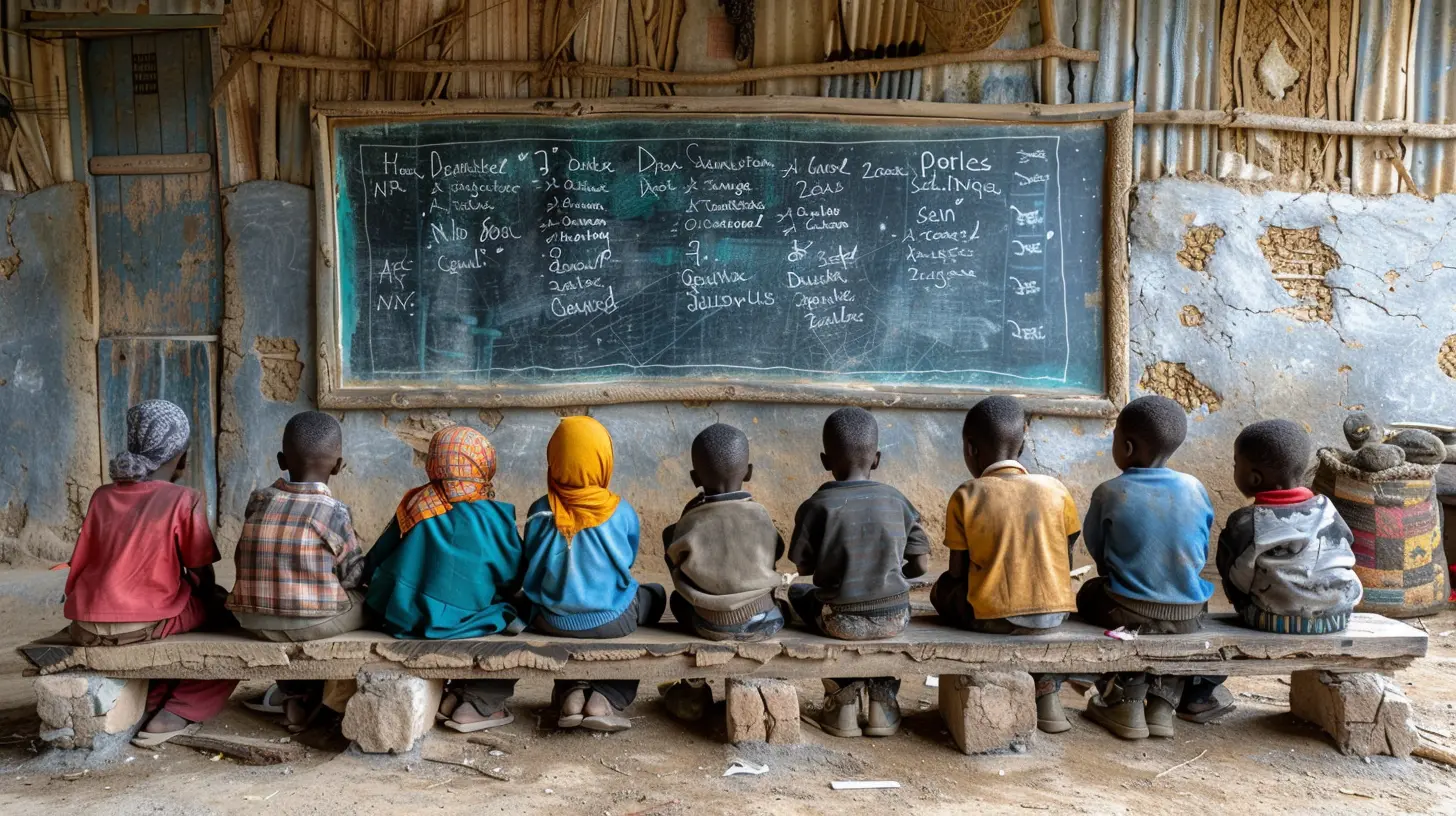How Education Policy Affects Rural Schools
14 August 2025
Education is often hailed as the great equalizer, but for rural schools, it can sometimes feel like they’re fighting an uphill battle. Policies that shape how schools operate have a profound impact on students, teachers, and communities, especially in rural areas where resources can be scarce. But how exactly do education policies affect these schools? And what can be done to ensure students in rural areas get the same opportunities as their urban counterparts? Let’s dive in.

The Unique Challenges of Rural Schools
Before we explore the impact of education policy, it's important to understand the challenges rural schools face. Unlike schools in urban or suburban areas, rural schools often struggle with:- Limited funding – Smaller tax bases mean fewer financial resources.
- Teacher shortages – It's harder to attract and keep educators in rural areas.
- Lack of access to technology – High-speed internet and updated learning tools aren’t always available.
- Long travel distances – Students may spend hours commuting to and from school.
- Fewer course offerings – Advanced placement (AP) classes, extracurricular activities, and specialized programs can be limited.
Now, let’s see how education policies play into these challenges.

Funding and Budget Allocation
One of the biggest ways education policy affects rural schools is through funding. Many schools rely heavily on local property taxes, which can create disparities. In wealthier districts, well-funded schools can afford better facilities, higher teacher salaries, and advanced courses. In rural areas, however, lower property values often result in lower school budgets.Federal and State Funding Programs
To try and balance the scales, federal and state governments step in with funding programs like:- Title I funding – Helps schools with high percentages of low-income students.
- The Rural Education Achievement Program (REAP) – Provides additional resources to small, rural districts.
- State equalization funds – Designed to redistribute money to underfunded schools.
However, these programs often fall short. The funding formula doesn’t always account for the unique costs associated with running a rural school, such as transportation for students who live miles apart or the need for multi-grade classrooms.

Teacher Recruitment and Retention
Imagine being a teacher in a small town, miles away from the nearest urban center. Would you stay if you were offered a higher salary and better benefits elsewhere? Probably not. That’s the dilemma rural schools face.Policies Addressing Teacher Shortages
Some policies aim to attract teachers to rural areas by offering:- Student loan forgiveness for educators who commit to teaching in rural schools.
- Incentive bonuses for teachers willing to work in hard-to-staff areas.
- Alternative certification programs to make it easier for professionals in other fields to transition into teaching.
While these efforts help, they often aren’t enough to keep teachers in the long haul. Without competitive salaries, professional development opportunities, and a sense of community support, rural schools continue to struggle with high teacher turnover.

Access to Technology and the Digital Divide
In today’s world, technology is crucial to education. But in many rural areas, reliable internet access is a luxury. Some students don’t have Wi-Fi at home, making it nearly impossible to complete online assignments.Government Initiatives to Bridge the Gap
Policies like the E-Rate Program, which provides discounts on internet services for schools, have helped. But boosting connectivity in remote areas is still a challenge. Some rural schools have found creative solutions, such as:- Partnering with local businesses to offer free Wi-Fi hotspots.
- Lending out mobile hotspots to students.
- Installing internet-equipped buses that serve as mobile study spaces.
Despite these efforts, the digital divide remains a major hurdle. Without consistent internet access, rural students stay a step behind their urban peers in developing critical digital skills.
Curriculum and Course Offerings
Another area where education policy impacts rural schools is curriculum. Students in big cities might have access to a variety of advanced courses, from AP classes to specialty career and technical education (CTE) programs. In rural schools, options can be far more limited.Policies Supporting Broader Curriculum
To combat this, some states have introduced programs like:- Virtual learning initiatives – Offering online courses for subjects that rural schools might not have the staff to teach.
- Dual-enrollment programs – Allowing high school students to take college-level courses.
- Career and technical education funding – Supporting hands-on training for vocational careers.
While these policies provide more opportunities for rural students, they sometimes come with logistical challenges. For example, virtual courses require reliable internet (which, as we discussed, isn’t always available). And dual-enrollment programs depend on nearby colleges, which might not be accessible to all students.
Transportation and School Consolidation
For many rural students, simply getting to school is a daily challenge. Buses may need to travel long distances to pick up students from spread-out communities. Maintaining these long routes can be costly, and students often spend hours commuting each day.The Push for School Consolidation
To cut costs and improve efficiency, some policymakers advocate for school consolidation, merging smaller schools into larger districts. While this can save money, it also has downsides:- Longer travel times – Some students may have to wake up at the crack of dawn to catch the bus.
- Loss of community identity – Small schools are often the heart of their towns, and closing them can be devastating.
- Fewer extracurricular opportunities – Students might have to travel even farther to participate in clubs or sports.
The decision to consolidate schools is always a tough one. While it can solve financial issues, it can also take away the unique sense of community that small schools provide.
Standardized Testing and Accountability
Standardized testing plays a major role in education policy. Tests like the SAT, ACT, and state-mandated assessments are used to measure student success and determine school funding. But are these tests fair to rural students?Rural schools often have fewer resources for test preparation. Without access to tutoring centers, advanced coursework, or experienced test-prep teachers, rural students can be at a disadvantage. Additionally, accountability measures tied to test scores can sometimes punish underfunded schools rather than help them improve.
What Can Be Done?
So, how can education policies better support rural schools? Here are a few ideas:1. Increase rural-specific funding – Policies should consider transportation costs, technology needs, and teacher retention when allocating funds.
2. Boost internet access – Expanding broadband infrastructure to rural areas should be a priority.
3. Enhance teacher incentives – Offering competitive salaries, housing support, and professional development can help attract and retain educators.
4. Expand curriculum options – More funding for online courses, CTE programs, and dual-enrollment opportunities can benefit students.
5. Revise testing policies – Standardized tests should be fairer to rural students, possibly incorporating alternative assessments.
Final Thoughts
Education policies have the power to shape the future of rural schools—for better or worse. While many policies aim to support rural education, they often fall short due to a lack of understanding of the unique challenges these schools face.If we truly want to bridge the gap and give rural students an equal shot at success, policies need to be tailored to meet their specific needs. That means more funding, better teacher support, expanded connectivity, and smarter accountability measures. After all, every student, no matter where they live, deserves access to a quality education.
all images in this post were generated using AI tools
Category:
Education PolicyAuthor:

Monica O`Neal
Discussion
rate this article
1 comments
Chase Harper
Who knew education policy could be as confusing as a chicken trying to cross the road? Let’s keep our rural schools clucking along!
August 20, 2025 at 3:59 AM

Monica O`Neal
Absolutely! It’s crucial to navigate these complexities to ensure our rural schools thrive. 🐔📚


